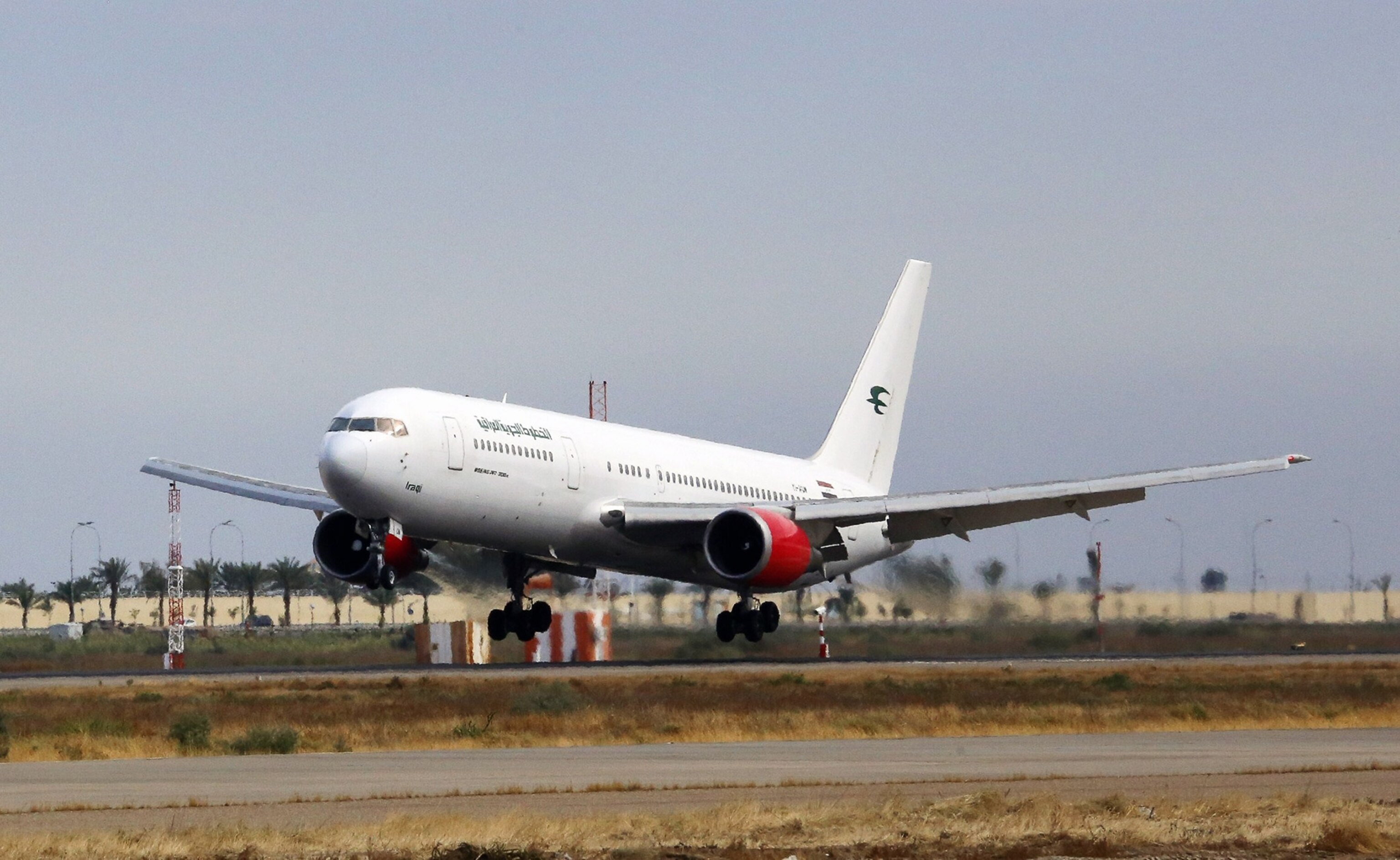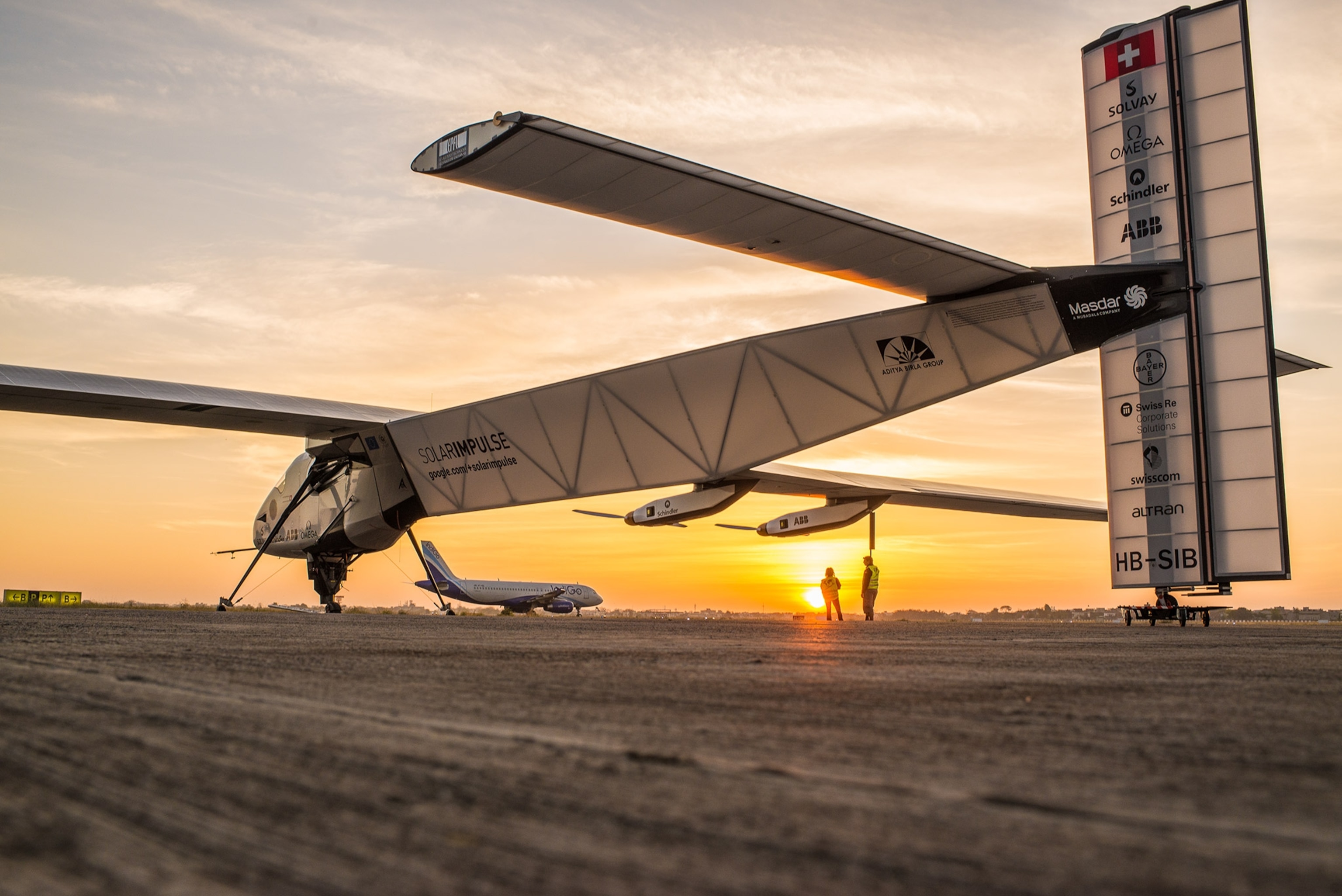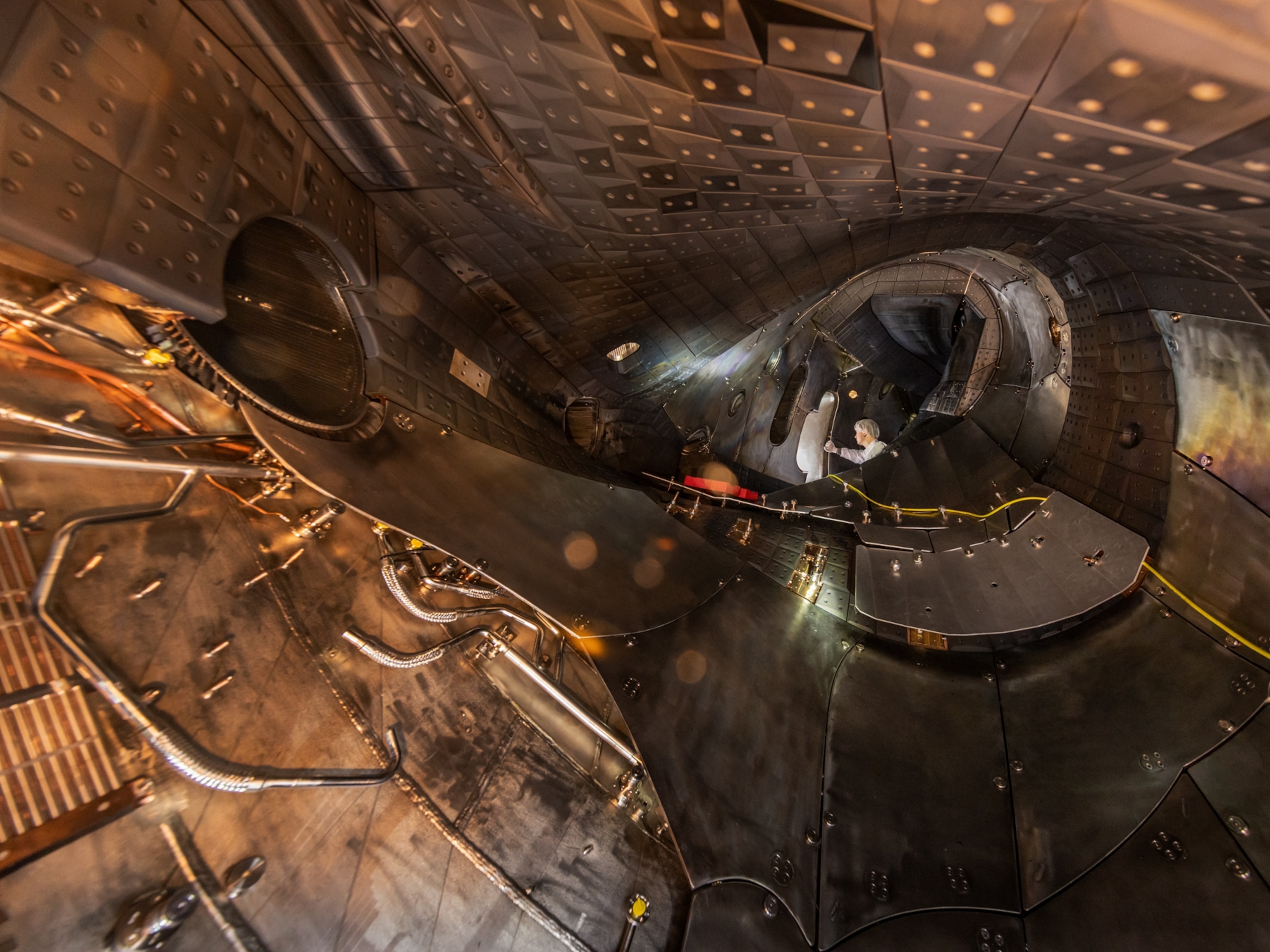
Airplanes Next in Line for Carbon Rules?
Efforts to regulate plane emissions have been delayed, but might soon be cleared for takeoff.
As the Solar Impulse plane makes a landmark journey powered solely by the sun, thousands of daily flights still burn regular old jet fuel. More people than ever are taking to the skies, and as aviation grows worldwide, so does its carbon footprint.
Airplanes sent about 700 million metric tons of carbon dioxide into the air in 2013, an amount set to more than triple by 2050. Yet efforts to regulate those emissions, as many countries do for cars and trucks, remained in a holding pattern for years—until now.
This month, the United States plans to move ahead with its own proposal, and the clock is ticking on United Nations’ efforts to set a global standard. The European Union has tried twice, and failed, to impose a carbon tax on incoming or outgoing flights after protest from other countries. Is the notion of reining in all airplane emissions as fanciful as, well, a plane that runs on solar panels?
"There's an almost 18-year history to this," says Dan Rutherford, program director for marine and aviation at the nonprofit International Council on Clean Transportation. He says the 1997 climate pact known as the Kyoto Protocol handed responsibility for addressing the world's aviation emissions to the UN's International Civil Aviation Organization (ICAO).
"ICAO spun its wheels for 12 years. " he says, before beginning work on two policies, both due in 2016: an efficiency standard for new aircraft, and a price on carbon for all flights.
Separately, environmental groups have sued the U.S. Environmental Protection Agency to push it toward reining in aircraft emissions under the Clean Air Act. A 2012 ruling compelled the agency to act.
Though some airlines are experimenting with biofuels, cutting carbon in the short term will simply come down to burning less of the conventional stuff. Commercial planes' fuel efficiency roughly doubled between 1960 and 2008, according to Rutherford. But, he says, "the gains have flattened out quite a bit over the past couple decades." (Read more about five technologies that are reshaping flight for fuel efficiency.)
Aside from the aircraft themselves, airlines can also improve how flights are fueled, flown, and routed. In four years of ranking U.S. airlines on fuel efficiency, Rutherford says his group has found a consistent gap of about 26 percent between the best and the worst. (Alaska Airlines consistently scores at the top of the ranking, while American hovers at the bottom.)
Airlines have a financial incentive to improve fuel efficiency, of course. Many of them tout their efforts to fly smarter, and the Air Transport Action Group, a nonprofit that represents the aviation industry, has set out a voluntary plan to halve its carbon emissions from 2005 levels by 2050.
"Voluntary action is not going to cut it," says Vera Pardee, a senior attorney at the Center for Biological Diversity, one of five environmental groups that earlier this year sent a letter to the EPA urging regulation.

Pardee points to the efficiency gap shown in the airline rankings as proof that emissions could be cut "simply by requiring the airlines to do what the best of them already do."
Aviation groups have argued that emissions measures should be coordinated through ICAO. They don’t see regional solutions, such as those on the table in Europe and the U.S., as feasible.
"We need to have global measures in place for a global industry like ours," says Haldane Dodd, Air Transport Action Group’s head of communications.
Pardee says that, given ICAO's "dismal record," depending on it for meaningful action requires "a great leap of faith that I personally am not willing to make."
She believes EPA action could serve as a catalyst internationally, in the same way that California led the way to tougher nationwide efficiency standards for cars.
"The EPA and/or the EU will set their own scheme," Pardee says. "At that point, the industry will come to the same realization that the car companies came to in the United States."
If that happens, the solar plane's trip might not be the only seemingly improbable aviation first of the decade.
The story is part of a special series that explores energy issues. For more, visit The Great Energy Challenge.
On Twitter: Follow Christina Nunez and get more environment and energy coverage at NatGeoGreen.





